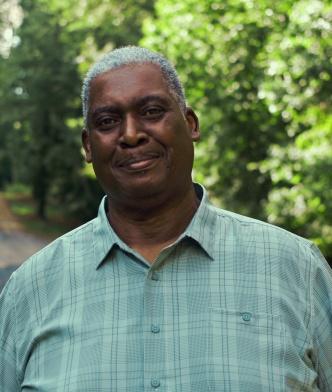How Can I Determine Who is at Fault in a Car Accident?
How Can I Determine Who is at Fault in a Car Accident?
- The Fee Is Free Unless You Win®.
- America's Largest Injury Law Firm™
- Protecting Families Since 1988
- 20 Billion+ Won
- 1,000+ Lawyers Nationwide
Free Case Evaluation
Porter Ranch Gas Leak
Jacob T. Rodgers v. City of Gainesville D/B/A Gainesville Regional Utilities
Estate of Frank Townsend v. RJ Reynolds, et al.
Morgan Stanley Data Security Litigation
Stephen Davis v. Levon Clark, Ricardo Williams, Marty Grifka and Derek Pak
McAdams v. Monier Lifetile, LLC
Coleman v. Martinez
Gold v. Lumber Liquidators
Clemmons, Patrick
Brink v. Ruiz

The attorneys featured above are licensed in Florida. For a full list of attorneys in your state please visit our attorney page.
How Can I Determine Who is at Fault in a Car Accident?
Every year, there is an average of 6 million passenger car accidents in the United States. That's about one crash every thirteen minutes, and most of us will be in three or four crashes during our lifetime. While car accidents are quite common occurrences, that doesn't change the fact that sorting out the particulars of the event afterward is usually an ordeal. You may have injuries, and property damage is a certainty, even if it's minor. However, when it comes to an insurance settlement, the fault of the accident will be a decisive factor in who pays and how much.
Sometimes, figuring out which driver is at fault for the accident is not so easy, though. Often, people will instinctively defend their actions and choices, even bad ones. If neither driver admits to being at fault for the accident, it will require an investigation and evidence. You may be asking, "How can I determine who is at fault in a car accident?" If so, Morgan and Morgan is here to help you with this dilemma.
We've helped thousands of people just like yourself recover compensation after a car accident that wasn't their fault. We'll explain the important details of liability, how fault can be determined, and state laws that may impact your claim.
Get answers to commonly asked questions about our legal services and learn how we may assist you with your case.
Morgan & Morgan
What Is "Fault" or "Liability" in a Car Accident?
Fault in a car accident is who is responsible for causing the collision. Generally, if someone violates traffic laws by disregarding traffic signs or failing to obey speed limits, they are the ones at fault if an accident occurs. In this instance, the fault is black and white. Traffic violations are often used to assign fault. But what if both drivers broke traffic laws? In that case, state laws concerning how insurance is handled will determine who pays and how much. However, some states follow no-fault insurance laws. We'll cover more about that later. Here are some examples to illustrate how fault and liability work.
100% at fault - If there is no question that one driver is 100% responsible for the accident, their insurer will be subject to pay for the other party's medical expenses and property damage.
51% or more at fault - When both drivers share in the responsibility, the percentage of fault can be an issue. Some states have laws dictating that if one driver is 51% or more at fault, they are responsible for paying 100% of the ensuing damages. Still, some states observe laws where the insurance company pays out according to the percentage of fault. For example, if you were found to be 20% at fault, the other party's insurer would pay 80% of the damages. The other 20% would come out of your pocket.
50/50 fault - If it's impossible to figure out who was at fault, both parties' insurers may agree to split the damages evenly. However, your state laws may prohibit this solution.
As you can see, determining the fault for an accident is a huge deal and will make all the difference in how much compensation you can recover. It's important to understand that insurance companies usually decide which driver is at fault or if both drivers share the blame. When the fault is in question, having an experienced lawyer on your side literally pays. Morgan and Morgan has offices nationwide with highly competent car accident lawyers ready to help. Whether through an in-depth investigation to discover evidence that was overlooked or artful negotiation with insurance adjusters, we'll work hard to ensure you get the compensation you deserve for a car accident that wasn't your fault.
Even if you were partially to blame for the accident, we could still make a difference by downplaying your involvement. In some states, a 1% variance could make or break your ability to recover compensation, so getting a lawyer who will fight for your interests now is vital. Don't wait until you get bad news.
What Are the Different Approaches to Determining Fault for a Car Accident?
Determining fault can sometimes be a challenge, so there are different ways and methods used by insurance adjusters, police, and car accident lawyers alike. Here are some examples:
Eyewitnesses - Drivers involved in a car accident have the motive to claim innocence because money is at stake. For the most part, eyewitnesses do not, so their statements can have a powerful impact. Eyewitnesses can help establish the sequence of events, and their statements can support other evidence that is available. It can be compelling, especially when multiple witnesses share the same account of what happened. Still, eyewitness accounts are not always available. For example, your accident could have occurred in a rural setting or at night when few people were around.
Police report - Most states have laws that require law enforcement to be notified when a car accident occurs if there are any injuries or if property damage rises to a specific dollar amount. Police reports can be critical pieces of evidence because responding officers, much like eyewitnesses, rarely have a stake in the outcome and therefore are usually considered quite reliable. A police report will contain both facts and the opinion of the officer who investigates the car accident. They will document identifying information of those involved in the collision as well as witness contact information. Additionally, the police report should contain facts like the date, time, location, injuries, and property damage. Furthermore, the responding officer will take notes concerning any environmental conditions that may have contributed to the accident as well as their own opinion concerning the cause (or fault) of the accident.
While insurance company adjusters don't always rely on the opinion written in the police report to determine fault, if the evidence they personally observe coincides with the police officer's assessment, it can help support their own conclusion.Vehicle damage - The extent of vehicle damage and the location of the damage can be used to determine fault in a car accident. For example, if your collision took place in an intersection, the area of the damage could be an indicator. Suppose you were hit broadside (or t-boned) at a four-way stop. The fact that you were hit on the side of your car could indicate that the other driver missed the stop and therefore was at fault for not observing traffic signs. Likewise, rear-end accidents are almost always the fault of the driver who was behind the other. However, in some cases, the lead driver could be at fault if they slammed on their brakes for no reason or recklessly muscled their way into a lane.
Still, you may be wondering, "How can I determine who is at fault in a car accident?" In most cases, the insurance company ultimately decides. If both parties are at fault, they also decide what percentage each party shares, which claims to pay out, and which claims to deny. Still, they are contractually obligated to conduct reasonably thorough investigations and negotiate in good faith. Suppose your insurer decides that the other driver is at fault. In that case, they will go after their insurance company to pay for your damages. However, having your own legal representation during this process is still advantageous, especially when you've been severely injured. While your own insurance appears to be looking out for your interests, they are effectively looking out for their own at the end of the day. You need someone to be 100% your advocate. Morgan and Morgan can help.
What Happens if Fault Cannot be Determined in a Car Accident?
Usually, insurance adjusters can negotiate a decision concerning fault with other insurance adjusters. However, in some instances, an agreeable resolution can't be achieved. You may need to look for outside intervention, such as arbitration. This is an alternative to a court dispute. Still, it's legally binding, and both parties must agree to submit to the arbitrator's decision.
Finally, while a lawsuit is not always the most desirable recourse, in some instances, other methods to resolve claims where the fault is in question can only be decided by a judge and jury. Usually, claims with significant damages are at the most risk of ending up in court because neither insurer wants to be responsible for paying large sums of money. Still, if Morgan and Morgan take on your case, it's because we believe in the validity of it, and we will see it through, even if it requires a lengthy trial.
Even so, it's important to understand that when fault cannot be determined, it's because both drivers may be to blame. In that case, depending on which state you live in, your award could be reduced by the percentage of blame you bear. As we outlined earlier, state laws can impact if you can recover anything at all, and if so, how much. This concept is generally known as comparative fault under the law.
What Is Comparative Fault in a Car Accident?
The type of fault you bear and where you live can dramatically impact your ability to recover damages after a car accident. Here is how that works:
Pure comparative fault - In states that observe the pure comparative fault doctrine, the settlement is based upon percentages. If you were 50% to blame for the accident, you might recover 50% of the damages. Conversely, the other driver would be entitled to claim the other 50% against you. Still, even if you were 99% at fault, you could still claim 1% of your damages in states that follow these laws.
Modified comparative fault - In states that observe modified comparative fault, you can only collect if a jury decides you are 50% or less at fault. If a jury decides you have 51% or greater responsibility, you cannot collect anything because you're more at fault than not. Here is where having a convincing and experienced car accident lawyer would be crucial.
Contributory fault - In states that observe contributory fault laws, legal representation is paramount because if a jury decides that you bear even 1% of the blame for the accident, you get nothing. It seems unreasonably strict, but if you've had an accident in Alabama, Maryland, North Carolina, Virginia, or Washington, D.C., we urge you to reach out to us for your best chance at beating this system.
How Does No-Fault Insurance Law Work?
In some states, fault is not the essential factor in determining who pays for a car accident. Instead, drivers purchase personal injury protection (PIP) insurance, which pays a percentage of their own medical expenses and lost income regardless of fault. States that have adopted this form of insurance have done so supposedly to make settling car accident claims easier. However, you may still make a claim against an at-fault driver if your injuries or medical expenses meet a certain threshold. (This also varies by state.) Furthermore, the at-fault driver's insurance pays for property damage.
In a few states, you have the option to choose no-fault insurance, which would bar you from suing another driver, but you pay lower premiums. In states like New Jersey, you have the option to upgrade to an insurance package that would allow you to pursue a lawsuit in case of a car accident that wasn't your fault.Contact Morgan and Morgan After a Car Accident
You asked, "How can I determine who is at fault in a car accident?" You might already be experiencing trouble with this.
Morgan and Morgan can help to gather evidence and present your side in a favorable light. If you're looking for a fair and equitable outcome to your legal matter, our car accident lawyers have the experience and determination to ensure you get it. Contact us today for a free case evaluation. We only get paid when you do.
How it works
It's easy to get started.
The Fee Is Free Unless You Win®.
Results may vary depending on your particular facts and legal circumstances.
Step 1
Submit
your claimWith a free case evaluation, submitting your case is easy with Morgan & Morgan.
Step 2
We take
actionOur dedicated team gets to work investigating your claim.
Step 3
We fight
for youIf we take on the case, our team fights to get you the results you deserve.






